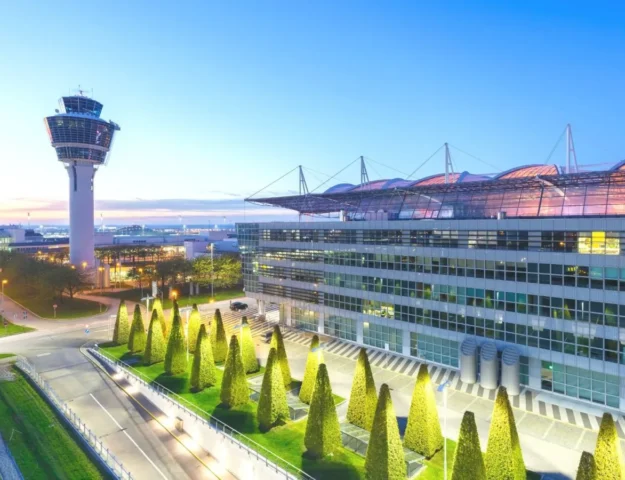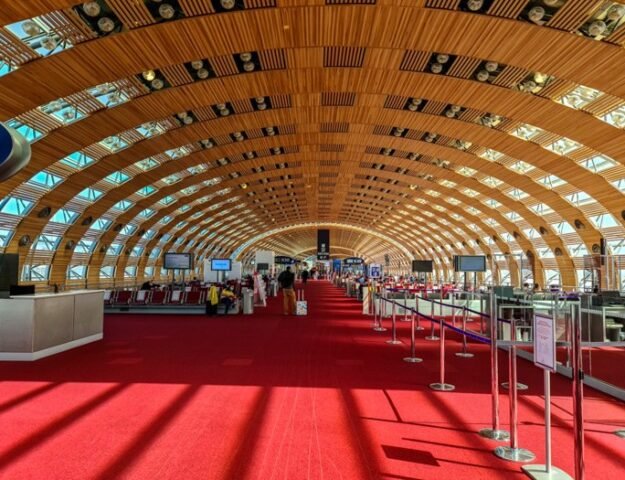Istanbul, the city where Europe and Asia meet, has always been a crossroads of history, culture, and commerce. Continuing its legacy as a bridge between worlds, Istanbul Airport stands as a testament to modern architecture, innovation, and global connectivity. This blog delves into the incredible story of Istanbul Airport—its historical significance, design brilliance, technical achievements, environmental efforts, and its role in shaping Turkey’s economy and aviation future.
A Brief History of Istanbul Airport
Officially opened on October 29, 2018, Istanbul Airport marked a monumental leap in Turkish aviation. Designed to replace the overburdened Atatürk Airport, the new facility was part of a larger vision to transform Turkey into a global aviation hub.
The project was a feat of international collaboration, involving thousands of engineers, architects, and laborers. Their collective effort resulted in one of the largest and most advanced airports in the world—a true symbol of Turkish ambition, innovation, and global relevance.
Architectural Grandeur
At first glance, Istanbul Airport’s aesthetic brilliance is undeniable. The terminal building, designed by the internationally acclaimed firm Grimshaw Architects, combines the timeless elegance of Turkish design with modern architectural finesse.
Key Design Elements:
- Sweeping rooflines inspired by Turkey’s natural landscapes—rolling hills and sand dunes.
- A vast, light-filled atrium with high ceilings, glass, steel, and locally sourced materials.
- Interior references to Ottoman architecture, including mosaic tile domes reminiscent of Hagia Sophia.
Beyond its visual beauty, the architecture focuses on functionality, creating a serene, user-friendly experience for millions of travelers annually.
Connecting Continents: A Geopolitical Hub
As the only city on two continents, Istanbul’s geographic location gives its airport strategic importance. Istanbul Airport serves as a bridge between East and West, making it a critical global transit hub for passengers traveling between Europe, Asia, Africa, and the Middle East.
This central location has allowed Turkey to:
- Strengthen its role in global diplomacy and business.
- Attract millions of international tourists.
- Support increased international trade and commerce.
Technical Prowess & Innovation
Istanbul Airport’s technical specifications are awe-inspiring. Its infrastructure reflects cutting-edge engineering and forward-thinking design:
- Runway Design: Includes one of the longest commercial runways globally, equipped to handle Airbus A380s and Boeing 747s.
- Air Traffic Control: Uses advanced radar and lighting systems for safe and efficient operations.
- Smart Technology Integration:
- Biometric facial recognition at immigration and security.
- Self-check-in kiosks and automated baggage handling.
- Real-time flight updates and passenger navigation via mobile apps.
These innovations not only streamline operations but significantly enhance the passenger experience.
Environmental Sustainability
In response to growing environmental concerns, Istanbul Airport has integrated several sustainable practices:
- Energy Efficiency: Incorporates energy-efficient lighting, heating, and cooling systems.
- Natural Lighting: Terminal design allows for extensive use of daylight, reducing electricity consumption.
- Waste Management: Operates a comprehensive recycling and waste reduction program.
- Green Initiatives:
- Use of electric ground vehicles.
- Adoption of renewable energy sources.
These efforts reflect a commitment to environmental responsibility in a traditionally high-impact industry.
Economic Powerhouse
Beyond design and functionality, Istanbul Airport is a vital engine of economic growth for Turkey:
- Tourism Boost: Increased global connectivity has fueled tourism, benefiting local businesses and hospitality sectors.
- Trade & Cargo: Advanced cargo handling facilities support international trade, reinforcing Turkey’s place in the global market.
- Job Creation: From construction to day-to-day operations, the airport provides thousands of jobs.
- Infrastructure Development: The airport’s presence has led to enhanced roads, transportation links, and local investments.
A Vision for the Future
Istanbul Airport is only just beginning its journey. Future plans include:
- Additional runways and terminals.
- Expanding cargo capacity.
- Investment in aviation R&D and innovation labs.
The goal: to become one of the world’s largest and most efficient aviation hubs, setting new standards for service, technology, and sustainability.
Conclusion: A Modern Symbol of Istanbul’s Legacy
Istanbul Airport is not just a travel facility—it’s a monument to human ambition, architectural brilliance, and cultural identity. It reaffirms Istanbul’s role as a global crossroads, blending old-world charm with new-world sophistication.
With a deep commitment to innovation, sustainability, and excellence, Istanbul Airport is truly a gateway to the world and a shining beacon of Turkey’s future.
Stay connected with Travels Chronicles for more inspiring stories from the world’s most iconic airports and cities.





